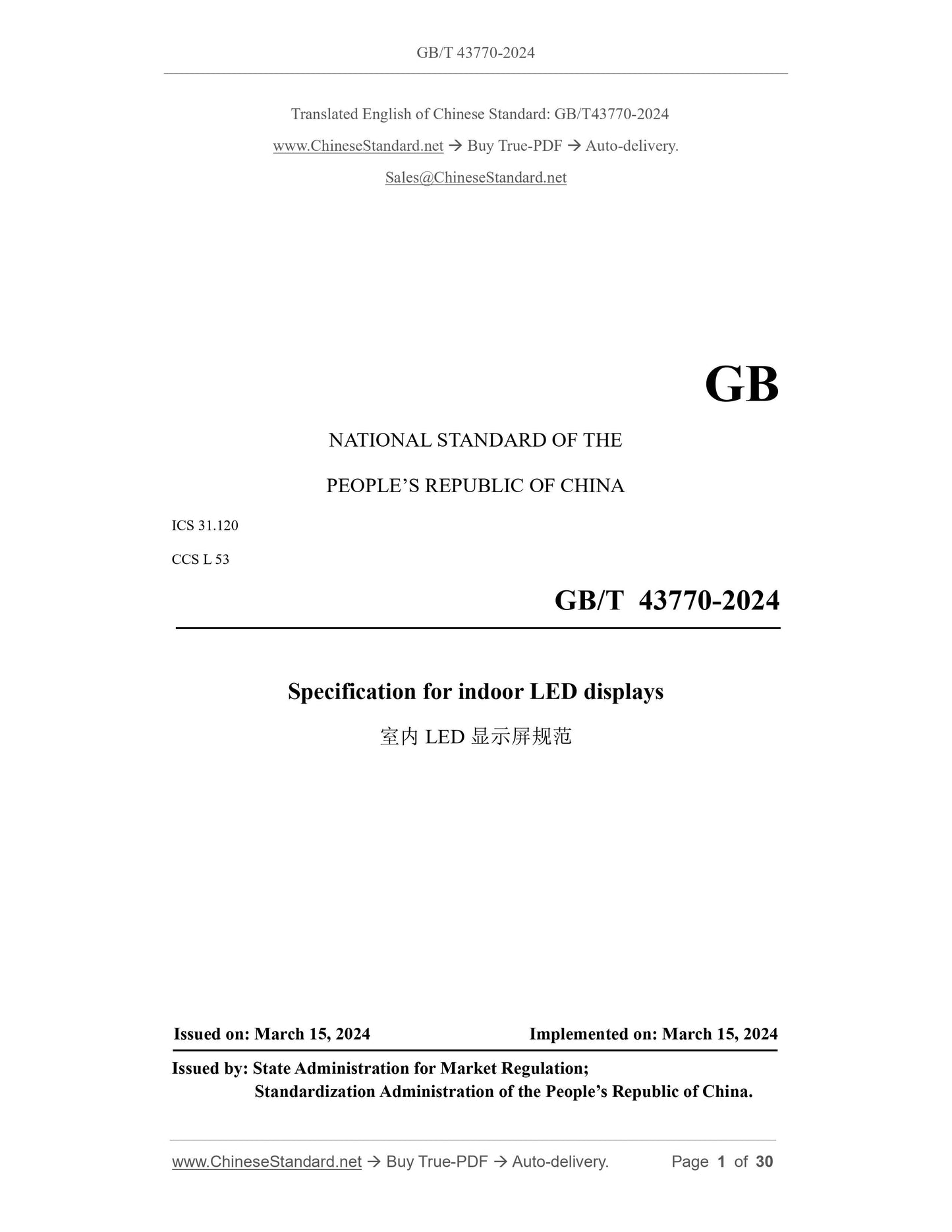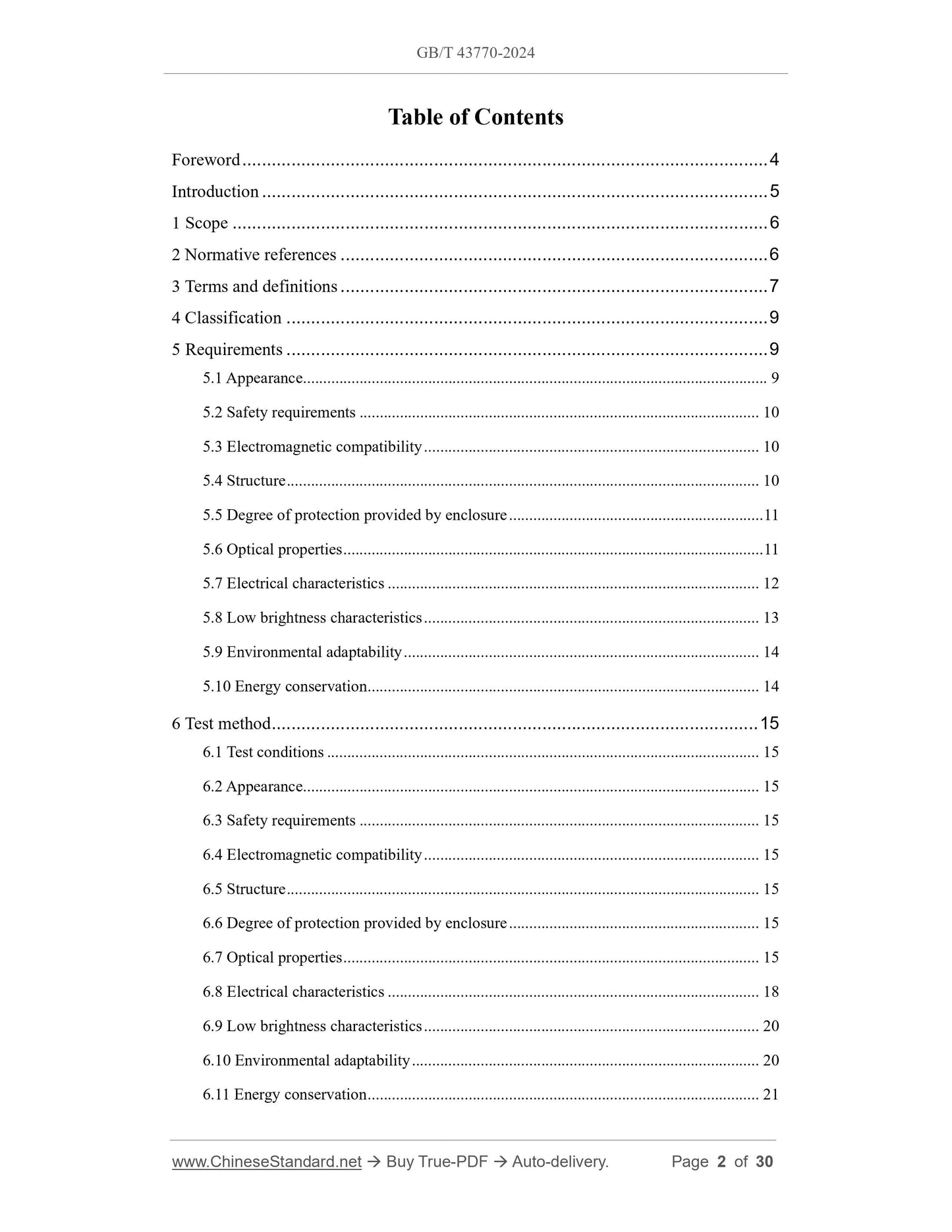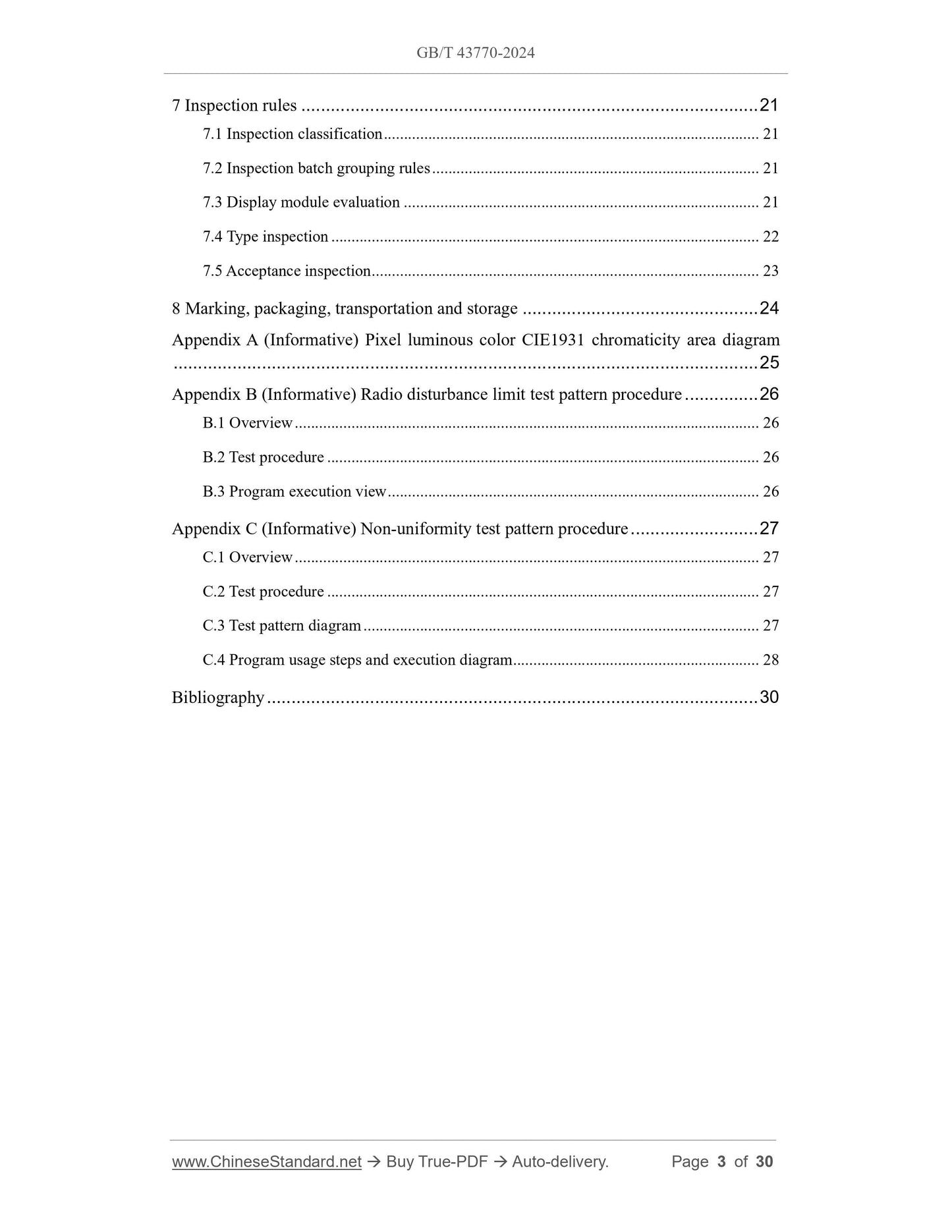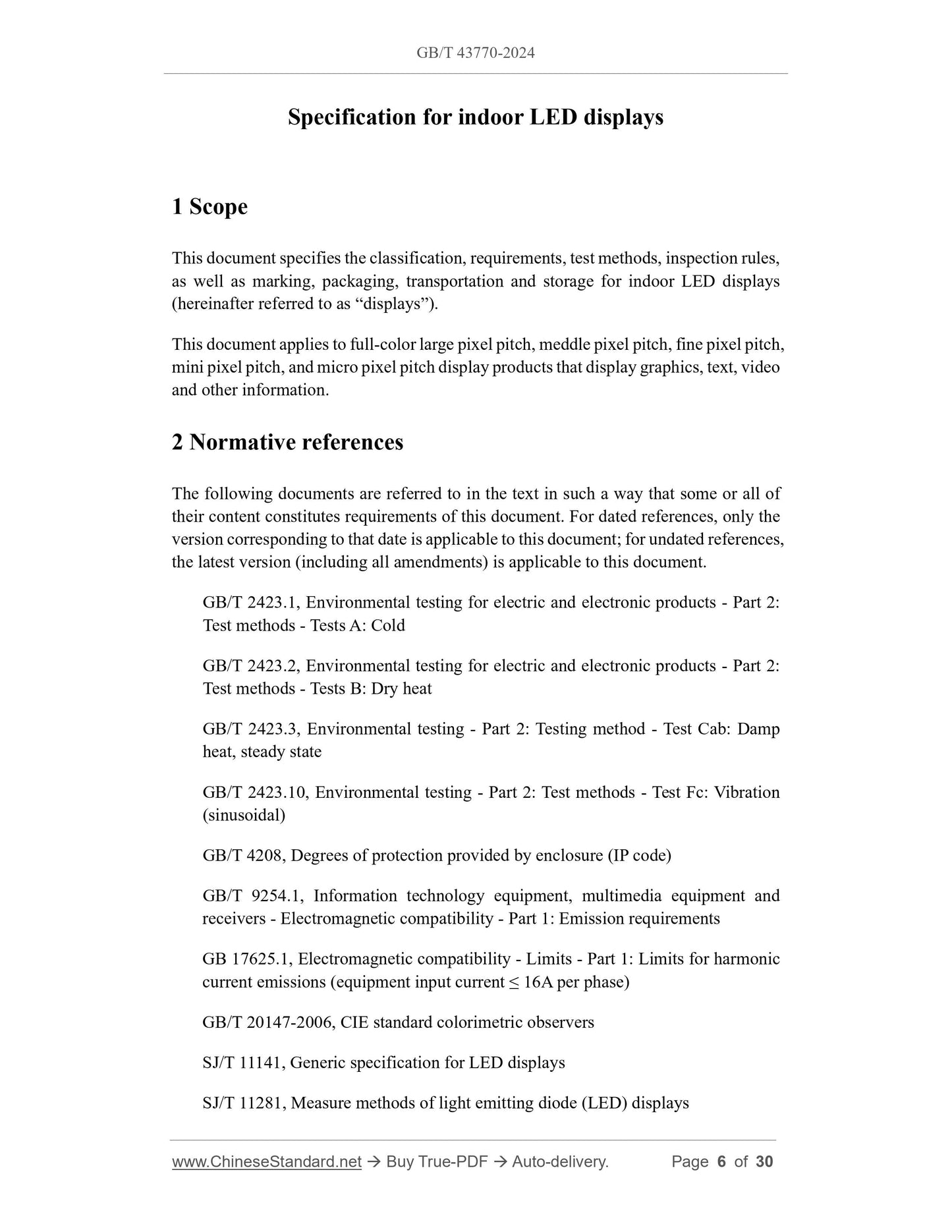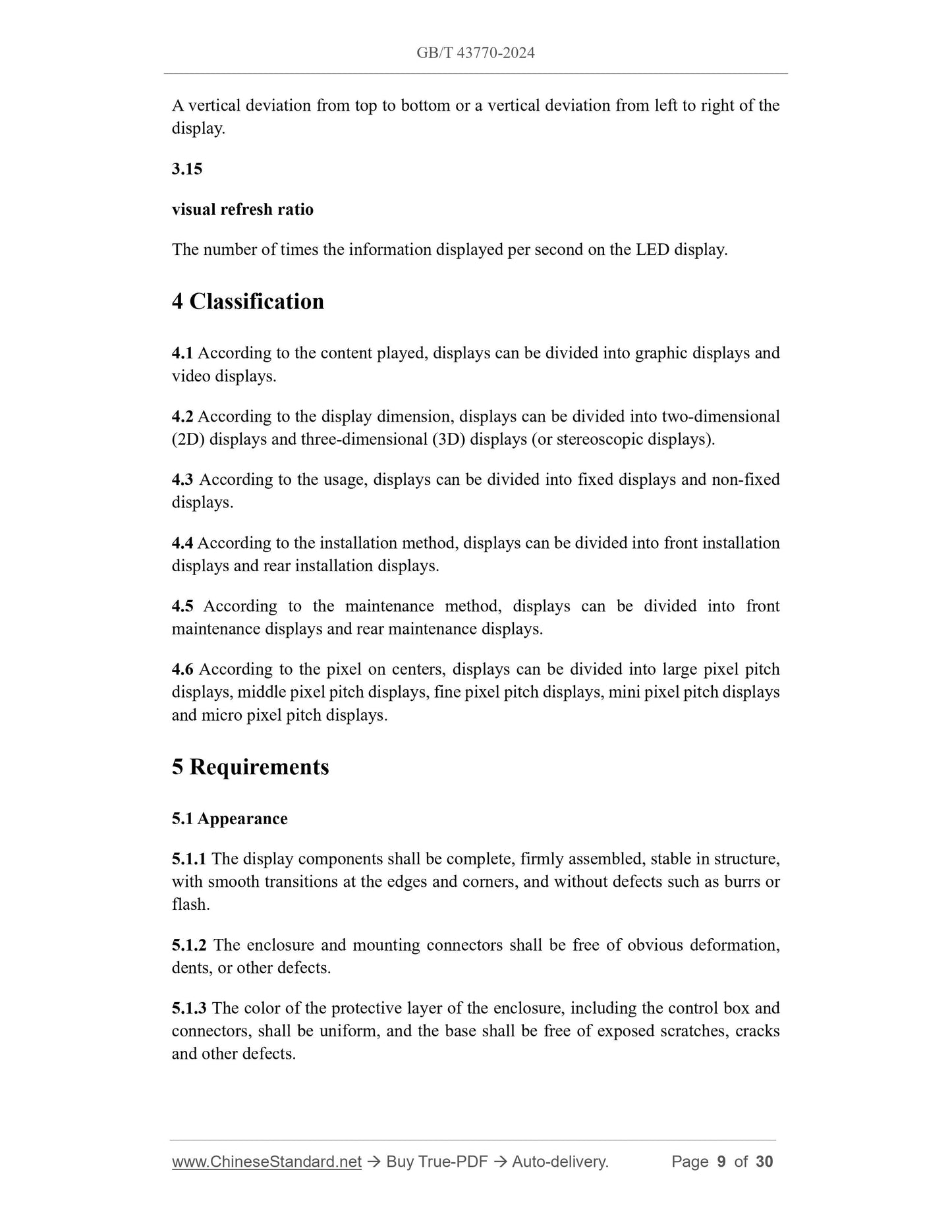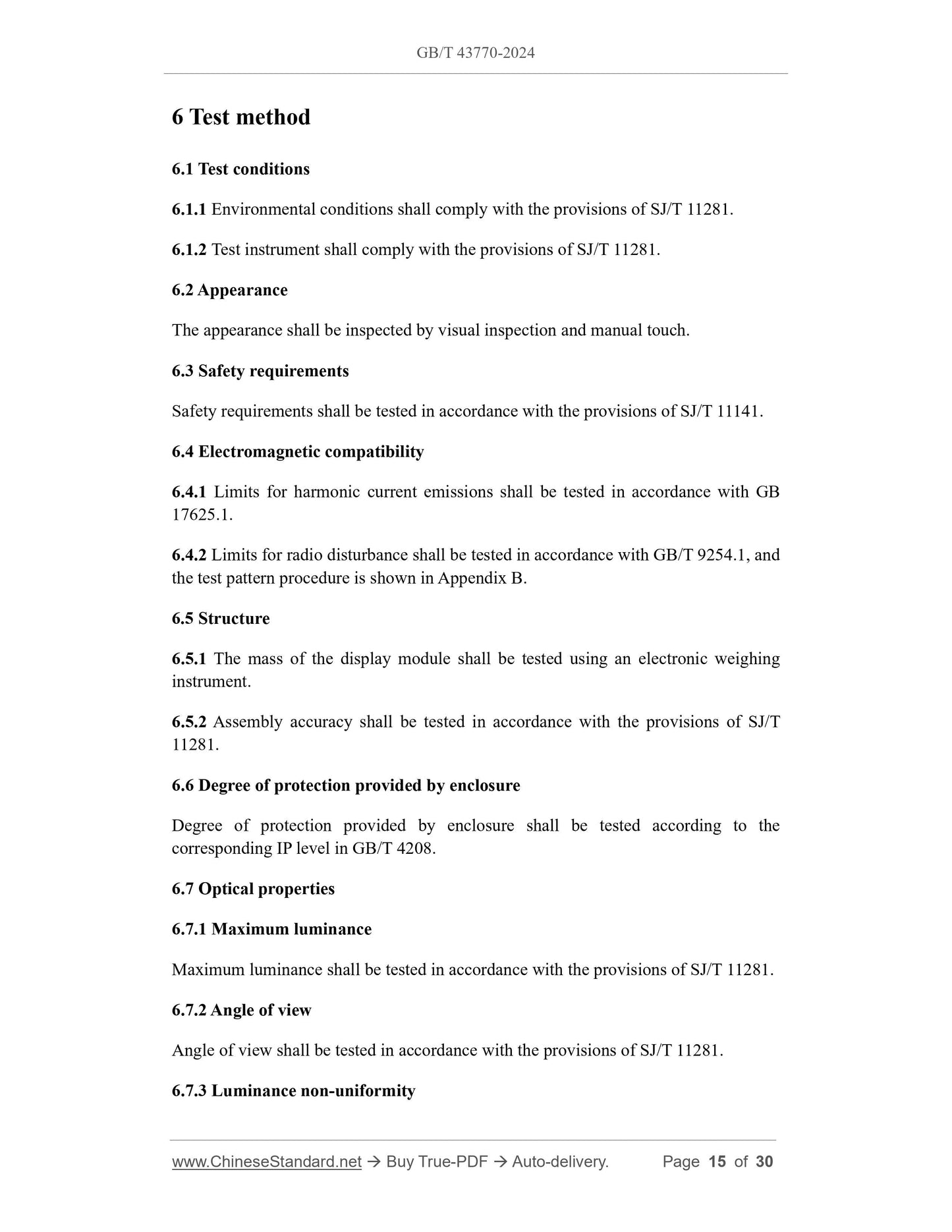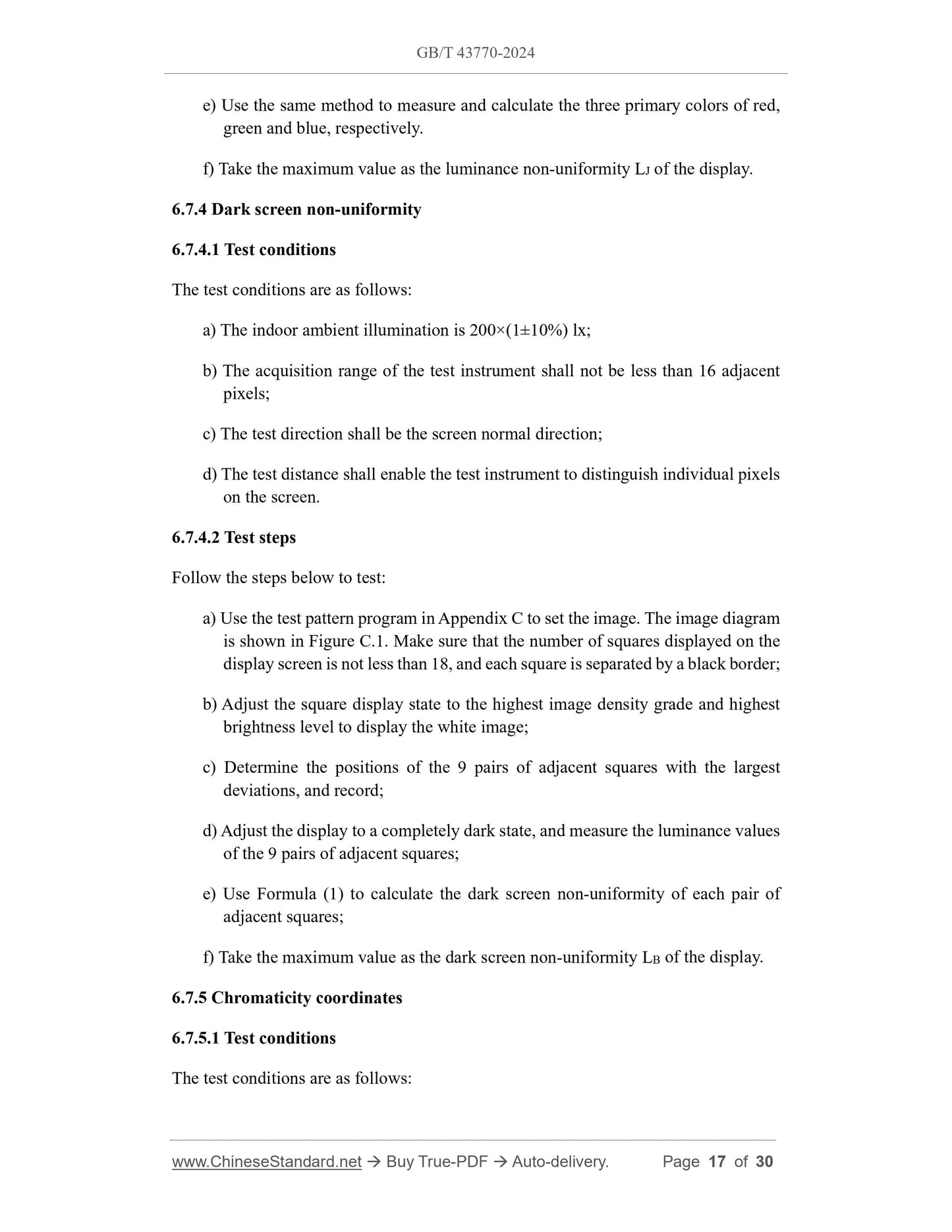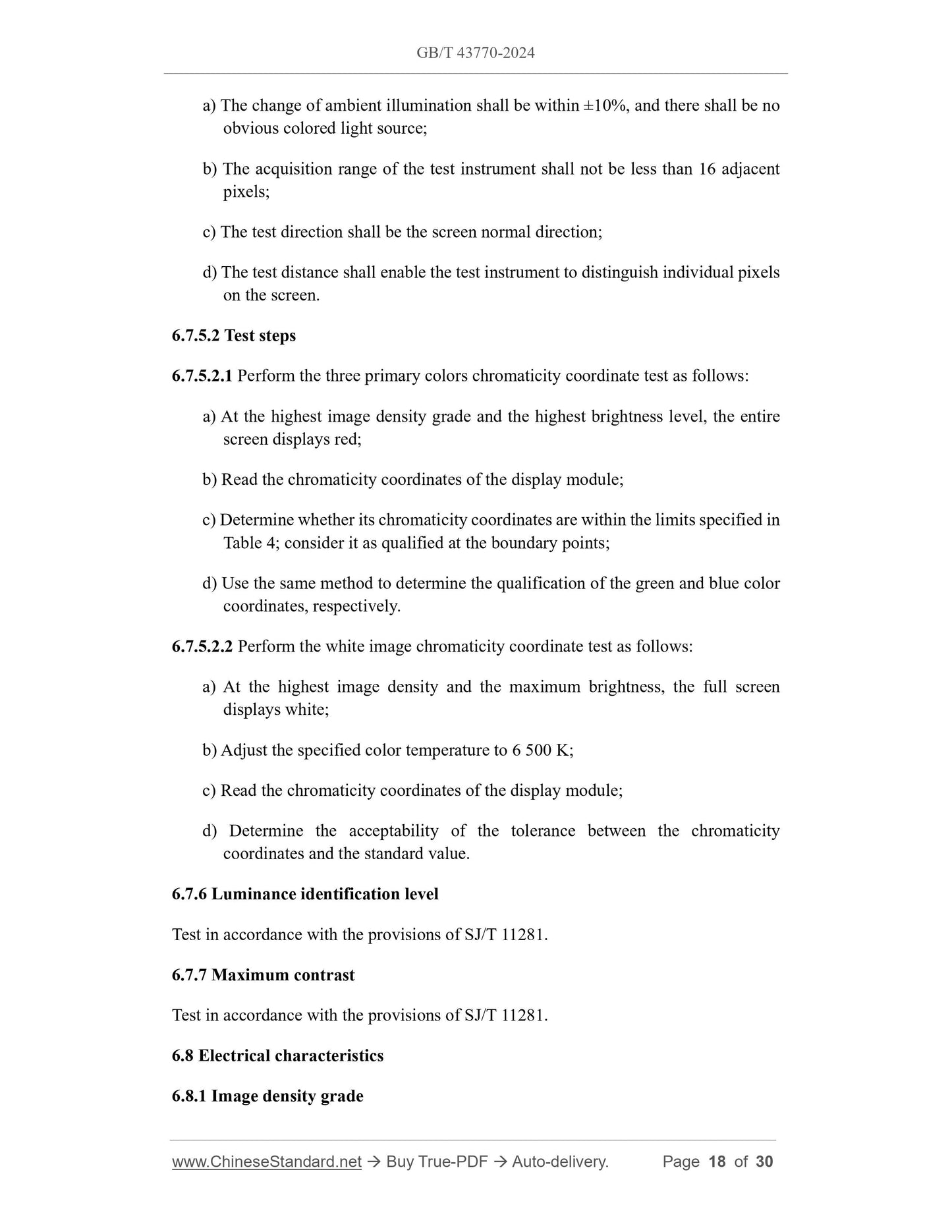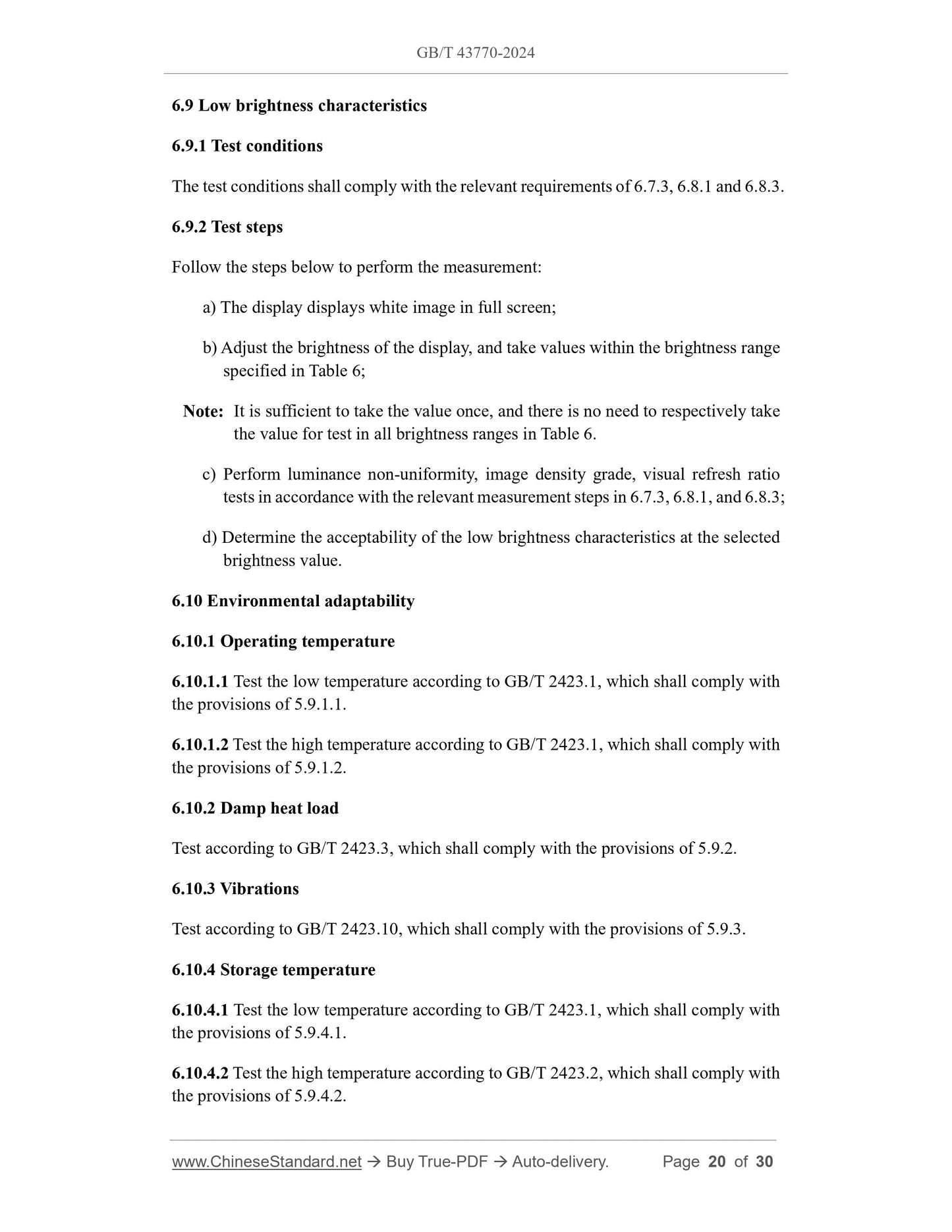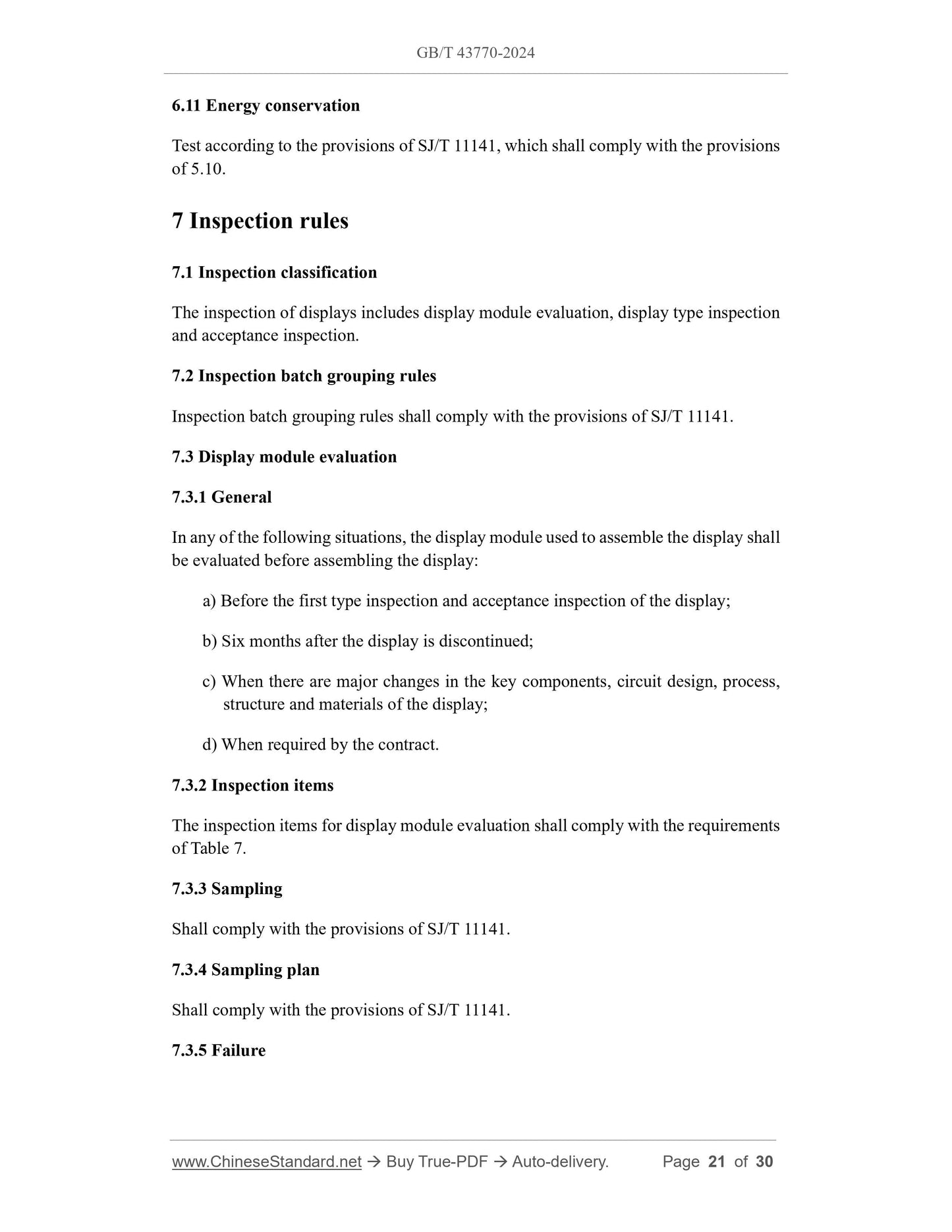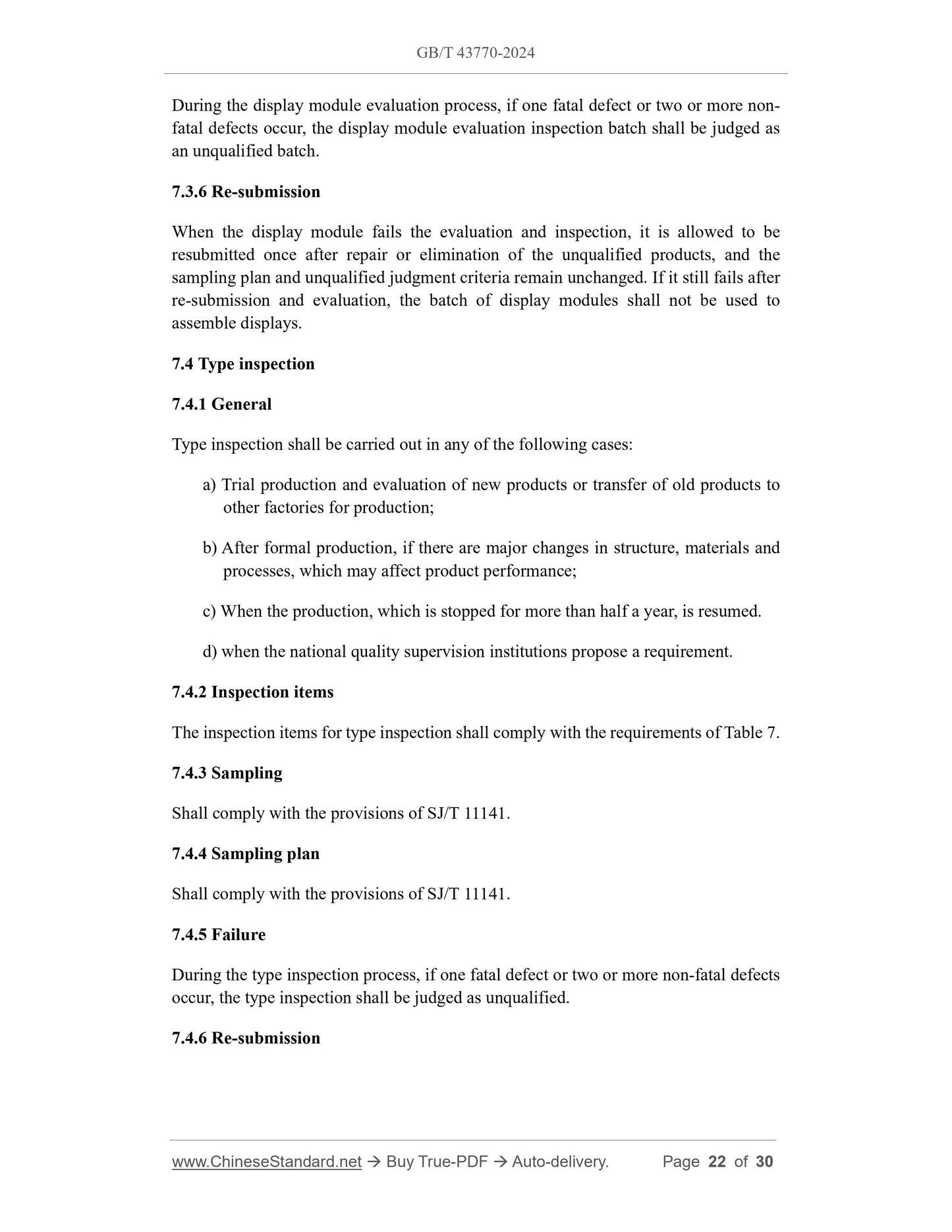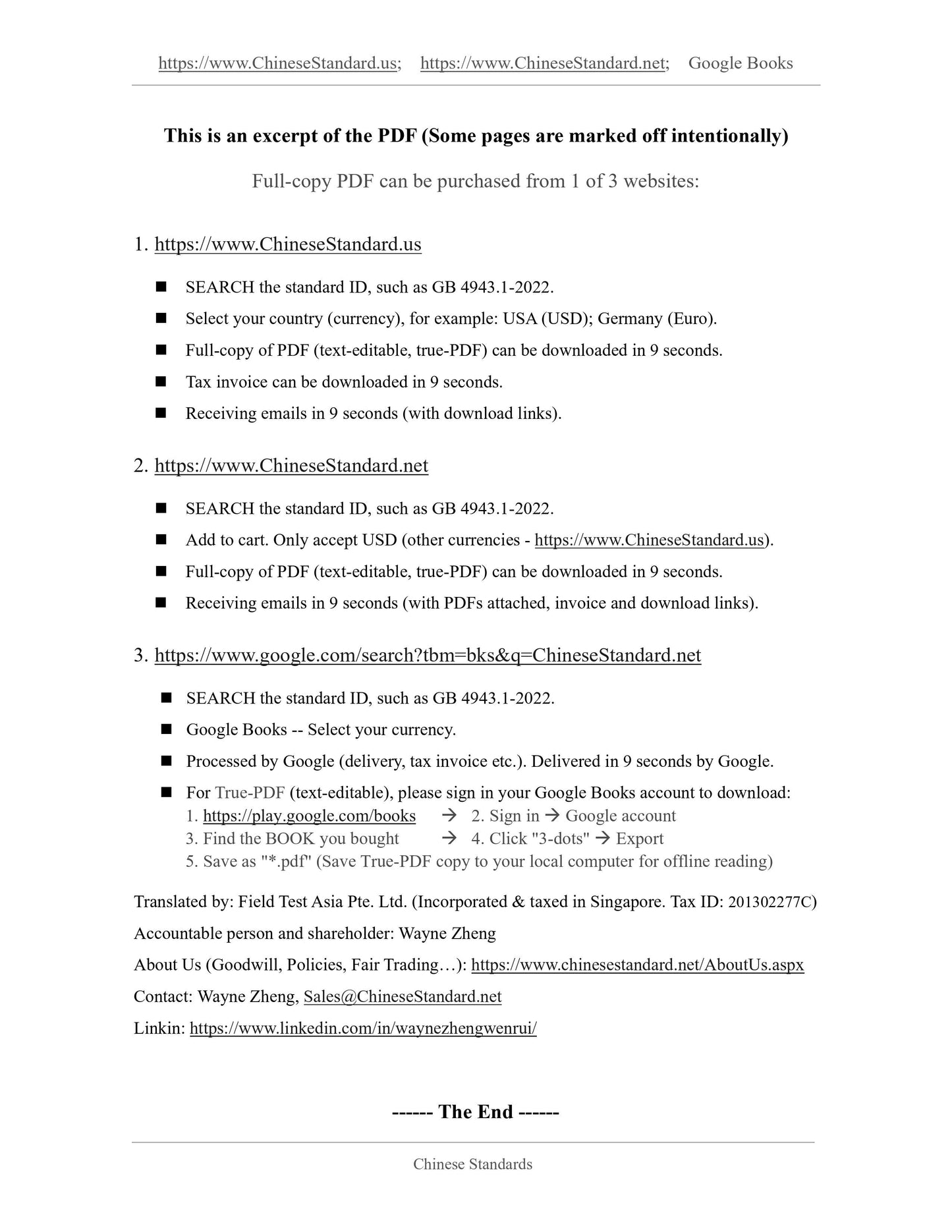1
/
of
12
www.ChineseStandard.us -- Field Test Asia Pte. Ltd.
GB/T 43770-2024 English PDF (GB/T43770-2024)
GB/T 43770-2024 English PDF (GB/T43770-2024)
Regular price
$355.00
Regular price
Sale price
$355.00
Unit price
/
per
Shipping calculated at checkout.
Couldn't load pickup availability
GB/T 43770-2024: Specification for indoor LED displays
Delivery: 9 seconds. Download (and Email) true-PDF + Invoice.Get Quotation: Click GB/T 43770-2024 (Self-service in 1-minute)
Newer / historical versions: GB/T 43770-2024
Preview True-PDF
Scope
This document specifies the classification, requirements, test methods, inspection rules,as well as marking, packaging, transportation and storage for indoor LED displays
(hereinafter referred to as “displays”).
This document applies to full-color large pixel pitch, meddle pixel pitch, fine pixel pitch,
mini pixel pitch, and micro pixel pitch display products that display graphics, text, video
and other information.
Basic Data
| Standard ID | GB/T 43770-2024 (GB/T43770-2024) |
| Description (Translated English) | Specification for indoor LED displays |
| Sector / Industry | National Standard (Recommended) |
| Classification of Chinese Standard | L53 |
| Classification of International Standard | 31.120 |
| Word Count Estimation | 26,256 |
| Date of Issue | 2024-03-15 |
| Date of Implementation | 2024-03-15 |
| Issuing agency(ies) | State Administration for Market Regulation, China National Standardization Administration |
Share
